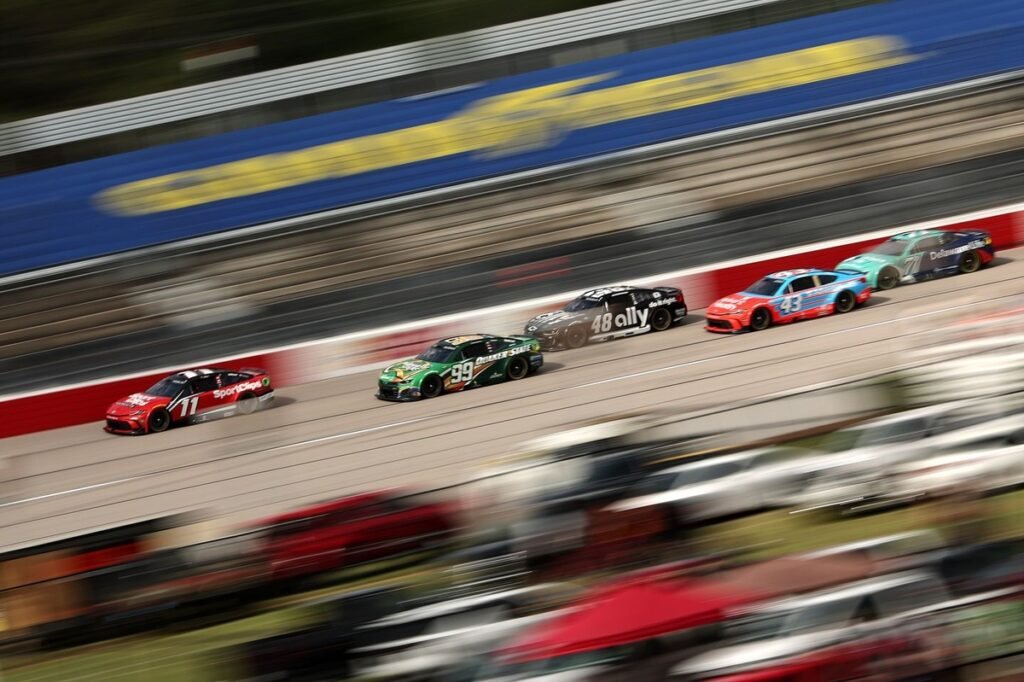NASCAR Legacy and Land Development: A Divided Community
The recent recommendation by the Mooresville Planning Board to approve the development of a technology park on Teresa Earnhardt’s 400-acre property is stirring significant emotions within the community. This land, deeply cherished by her late husband, NASCAR legend Dale Earnhardt, symbolizes not just his legacy but also the rural charm of the area that many locals are fiercely protective of. The board’s recommendation, which passed narrowly with a 4-3 vote, comes as a notable shift after an earlier unanimous decision against the project last year. Now, as the Mooresville Board of Commissioners prepares for a decisive meeting on the matter, the stakes are high, with community sentiment deeply divided.
The proposed technology park aims to transform the tranquil backdrop of the Earnhardt property into a bustling data center campus, to be developed by Tract, a data center developer. This shift is projected to create 277 jobs in an area that has historically been rural and agricultural. Of these jobs, nearly 195 are set to offer an appealing annual salary of $125,000. Kristin Dean from Tract emphasized the potential economic impact in her comments, suggesting that tax revenues generated from the development could reach into the billions over the next two decades. This promises a lucrative future for the area, yet it raises questions about the price of progress and how it aligns with the values that Dale Earnhardt stood for.
Community Response and Preservation Efforts
A significant turnout of around 200 residents expressing their concerns during the planning board meeting highlights the emotional weight of this decision. Locals have voiced fears that the proposed development undermines the rural character of their community, sparking discussions about preservation versus industrialization. Notably, this sentiment was echoed by Rene Earnhardt, the wife of Dale Earnhardt’s eldest son, Kerry. She passionately argued for the preservation of the land that Dale Earnhardt cherished, advocating for the rights of communities that view themselves as custodians of their agricultural heritage and rural landscape. Her plea underscores a broader tension between economic development and the desire for conservation in a rapidly changing world.
Despite community opposition, some aspects of the development plan aim to alleviate environmental concerns. One-third of the land will remain undeveloped, alongside plans for a police substation, an initiative that could enhance local safety. Additionally, the developers have asserted that their project will have minimal environmental impact, addressing some objections raised by concerned residents. However, such assurances may not fully assuage the fears of those who see the land as not just potential for profit but as a vital part of their community identity.
Navigating the Future: Economic Potential vs. Heritage
As the project moves forward, the Mooresville Board of Commissioners will play a crucial role in determining the future of this land. Supporters argue that the development has the potential to revitalize the local economy, create jobs, and generate substantial tax revenue. This vision of economic prosperity is appealing, especially in the face of economic uncertainty that many communities are currently grappling with. Advocates of the project emphasize that progress is vital for the area’s growth and that developments like these can coexist with community values if managed responsibly.
However, the proposals put forth come at a time when residents are grappling with broader questions about identity, memory, and the stewardship of the land. The legacy of Dale Earnhardt is woven into the fabric of Mooresville, and many residents feel a deep attachment to the land that carries his spirit. The tension that accompanies the vote emphasizes not only a battle over land use but also a broader cultural conversation about what it means to honor a legacy while pursuing economic development. The voices of those who advocate for preservation argue that thoughtful stewardship should prioritize the community’s character over industrial growth.
As the meeting approaches, Mooresville finds itself at a crossroad of sorts, balancing economic potential with the cherished memories of a beloved local legend. Community members will continue to voice their opinions, and the decision made by the commissioners will reflect their collective values. Whether the land will be transformed into a technology hub or preserved as a testament to Dale Earnhardt’s legacy remains uncertain, but what is clear is that the conversation surrounding this development transcends concrete boundaries. It touches on identity, heritage, and the profound connection communities have to their shared history.


